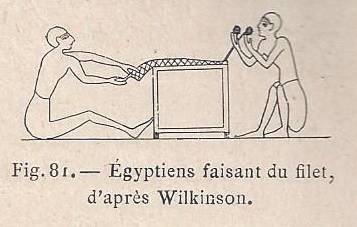LACE LITTLE HISTORY
The beginnings of lace
When did you start making lace? This is a question that all authors have asked themselves.
Some have decided it by saying that the origin of lace was lost in the mists of time, and that there was every reason to believe that it had been known in antiquity.
But, since successive and more and more precise research, it is no longer possible to doubt that before the 15th century we know of no certain document proving the existence of lace.
These assertions about the origin of lace are confirmed, moreover, by philological observations. French dictionaries and glossaries from the 16th century, by Henri Estienne, Nicod, Monnet...all prior to the first editions of the French Academy, do not contain the word: Lace.
That in the Orient, the cradle of our industries, we previously made light fabrics, such as gauze, muslin, net, that much is certain.


That these fabrics were used as veils, scarves and other uses similar to lace; that women decorated them with embroidery, or drew certain threads from them, is the most likely explanation for the ancient texts we have just discussed.
All these works of the son lead us to a new fashion which appeared in Italy which adorned the necks of women and men with a collar made of piped canvas which was called a ruff. The Medici, through their family alliances with the French court, brought this fashion and soon it spread throughout Europe. It was not that it was convenient when its dimensions were exaggerated. The authors of the time, speaking of these collars, describe them
"cobbled into organ pipes, milled into curly cabbages, and large like millstones".
The poets make fun of it, and we read in the piece entitled Virtues and properties of the Mignons of 1576:
“The collar does not turn at ease in the long reply of their strawberry”.
But what interests us is that this fashion motivated the use of an enormous quantity of lace to border these collars and the matching cuffs.
Venice is becoming more and more the center of lace production: there is a considerable trade in these collars and cuffs which are worn everywhere by men as well as women of quality.
Perhaps the oldest painting which shows lace is a portrait of a lady which is in the Venice Museum and whose author is Carpaccio, who died in 1515.
It is in this proportion that we understand the mention of
“old laces” given in an inventory of 1598 to those which furnished the bed of J.-B Valier, bishop of Cividale di Belluno.
Despite the great success that Venetian lace had from the outset, it encountered opposition even in its own country. Officers of the Republic bearing the title of Proveditori alle Pompe issued several orders prohibiting them from being worn, under penalty of a fine of 200 ducats.
However, in 1574, during the visit of the King of France Henry III to Venice, it was declared that invited ladies would be allowed to wear any clothing, ornaments and jewels of any kind "even those referred to in the ordinances".
Henry III certainly brought back from this trip a very keen taste for all coquetry.
We also see him so jealous of having impeccable strawberries that he did not disdain to iron them himself with the pleating iron.
And contrary to general opinion, it is not the influence of feminine taste that produced the most remarkable laces; It was when men decided to wear lace that the designs took on a very distinct artistic character. With all due respect to men who criticize women's luxury, it is undeniable that the most expensive pieces of lace were made for the court costumes of great lords or for the albs and rochets of prelates.
The carriages, which were beginning to be much more numerous since royal roads were being made everywhere, replacing the bad roads of the Middle Ages, were also trimmed with lace inside and all around their large open frames.
These exaggerations had greatly annoyed Henry IV who, however, was a good prince, very enduring and even very willing to encourage the progress of industries in his kingdom. It was he who, in 1607, created the Roayle Tapestry Manufacture. Already, in 1598, he had planted in the Bois de Boulogne 15,000 mulberry trees brought from Milan by a man named Balbani.
But the austere genius of the Huguenot Sully, his prime minister, did not cope well with these concerns:
“It is iron and soldiers that you need,” he said to his master, “and not lace and silks to dress the lilies of the valley”!